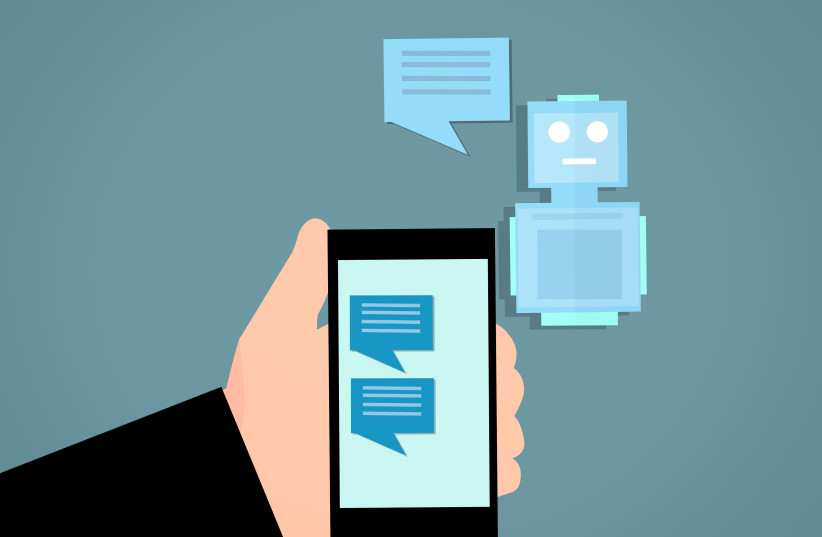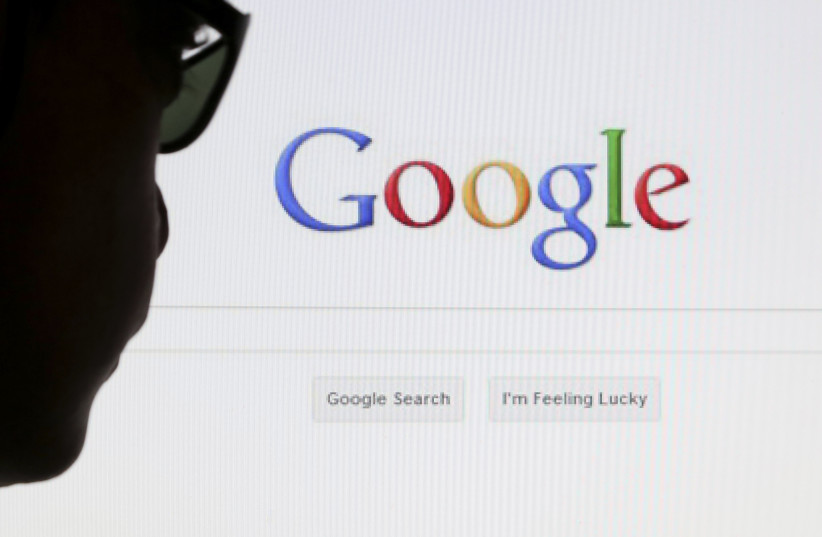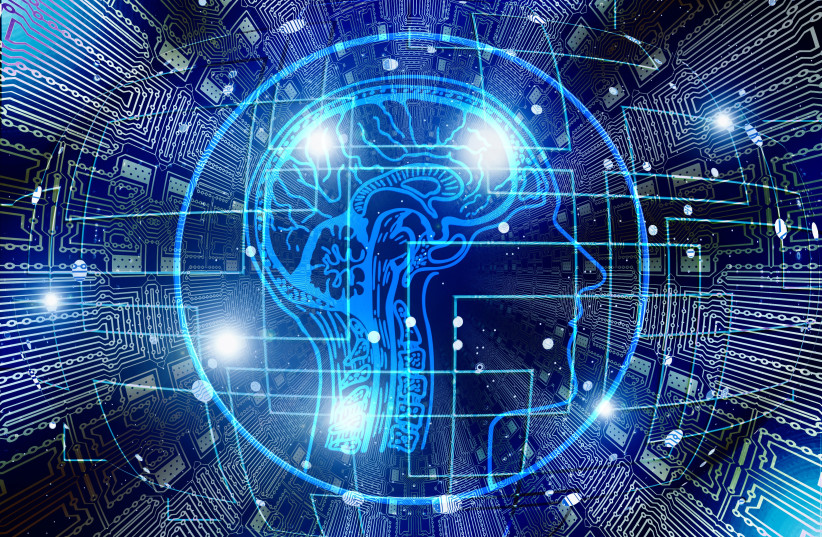The free artificial intelligence chatbot ChatGPT was launched less than 30 days ago, and already it has taken the world by storm.
The chatbot was released to the general public for free, for now, as a prototype on November 30 by its creators, the OpenAI research lab, which already made Internet fame thanks to their development of the popular DALL-E AI art generator.
The program itself, however, is built on its predecessor, the InstructGPT chatbot. Its programming is rather sophisticated and it has undergone testing to make sure it is smart, efficient and won’t produce harmful and deceitful responses.
But that isn’t really what most people care about. What people want to know is if the ChatGPT AI chatbot is effective, how complex can questions be and will it be able to take our jobs?
Well, after spending quite a bit of time using the ChatGPT AI chatbot, here is what we think you need to know.
 Chatbots, powered by artificial intelligence, have become more widespread in recent years. Meta’s AI chatbot, BlenderBot, has recently been saying antisemitic conspiracy theories (Illustrative). (credit: PXHERE)
Chatbots, powered by artificial intelligence, have become more widespread in recent years. Meta’s AI chatbot, BlenderBot, has recently been saying antisemitic conspiracy theories (Illustrative). (credit: PXHERE)What is ChatGPT AI chatbot and what makes it so interesting?
The ChatGPT AI chatbot is itself just an AI chatbot. Users type prompts into the input section and the AI produces a response to that prompt.
What makes the ChatGPT AI chatbot stand out from other chatbots is its articulation and sheer level of detail.
When a user puts in a prompt to ChatGPT, the AI will provide a detailed and articulate response, gathered on information surrounding the terms of the prompt as well as any instructions given therein.
As an example, we asked the ChatGPT AI to write a story where a fictional character, in this case, Captain Benjamin Sisko of the TV series Star Trek Deep Space 9, was interviewed by The Jerusalem Post.
The AI responded with a story that included details about the fictional Star Trek universe not present in the prompt itself.
To explain, the prompt did not specify that Sisko was also captain of the starship the USS Defiant; his role in the Bajoran religion; the existence of other characters on the show who were mentioned in the response by name; or the fictional Klingon caffeinated beverage raktajino.
When asked again for the same prompt, ChatGPT responded with a similar but new story.
This shows the level of detail the ChatGPT AI is able to quickly amass while creating its prompts.
We further experimented with longer-form stories.
For example, on one occasion, we asked ChatGPT to write a short story where Star Wars character Obi-Wan Kenobi is present in The Prince of Egypt, which tells the biblical story of the Exodus. It responded with a brief story, once again including details not mentioned in the prompt.
We then asked the ChatGPT AI to continue the story – and it did.
With that in mind, we decided to test just how long and specific the story could get.
So we presented an extremely specific prompt for a story. We asked the ChatGPT AI to write 1/3 of a story where Donald Duck, Yoda from Star Wars and former Venezuelan leader Hugo Chavez fight in the fictional Second Battle of Hoover Dam as depicted in the video game Fallout New Vegas.
It did so, and continued the story when asked.
What else can the ChatGPT AI chatbot write?
The chatbot is not limited to just stories and is able to respond to other types of prompts, for example, when given the input prompt “best cake recipe,” ChatGPT responded with a recipe for vanilla cake.
Another prompt asked it to provide a pros and cons list for a given input, which it did.
ChatGPT could also do songs and poems. For example, when asked to write the lyrics for an old Taylor Swift song, it promptly did so, writing out the lyrics to “You Belong With me.”
We also asked it to write a new Taylor Swift song, and it gave new lyrics it made up. It also would even do parodies of songs.
The AI chatbot can also write dialogues, which it did when we asked ChatGPT to write a dialogue between King Henry VIII and Alexander Hamilton.
One of the most complicated prompts we gave the ChatGPT AI chatbot was for it to write a screenplay. Our prompt requested the screenplay in question contain the following which it did:
- A talking pug named Bartleby
- Adam Lambert
- Fictional villain Wild Dog from the Time Crisis video game series
- The three characters going on a drunken road trip to Bhutan
- Every line of dialogue rhyming
Another potential use for ChatGPT is coding.
To test this, we asked it to produce code for a website for an architectural firm, which it did.
Others online have also taken notice of this capability, and it has become clear that ChatGPT has considerable implications for the future of many industries.
 A computer user poses in front of a Google search page in this photo illustration taken in Brussels May 30, 2014. (credit: REUTERS/FRANCOIS LENOIR)
A computer user poses in front of a Google search page in this photo illustration taken in Brussels May 30, 2014. (credit: REUTERS/FRANCOIS LENOIR)What sectors are in danger from the ChatGPT AI chatbot?
Several analysts have noted with concern that the ChatGPT AI chatbot could potentially pose a risk to careers or industries.
The most-cited issues typically revolve around education and academia, as the chatbot could be used to write essays and other schoolwork, as well as application essays.
There are reasons to be concerned, too. A columnist in The Wall Street Journal used ChatGPT to write a high school AP English essay, which passed examinations by graders.
Is ChatGPT better than Google? Will it replace Google?
One major industry that may be especially threatened by it is the Internet search engine industry, currently all but completely dominated by Google. This is because while Google produces links when asked a prompt, ChatGPT instead provides clear and articulate responses in text.
For example, when the input is “vacation ideas in England,” Google presented a series of links.
ChatGPT, however, immediately provided a clear and concise list of eight different vacation ideas.
But is ChatGPT inherently superior to Google? Not likely. After all, Google researchers helped make some of the technology in it, and the tech giant already has its own powerful AI chatbot that can rival ChatGPT. Known as LaMDA, this AI made waves after a Google engineer claimed it was sentient. While this wasn’t true, it is still a testament to how powerful it is.
But then why hasn’t Google made use of it?
One theory reported in The New York Times is that LaMDA is powerful and may be able to work as a replacement for online search engines, but Google is reluctant to do this because LaMDA isn’t able to properly deliver the tech giant’s biggest source of revenue: Digital ads.
Google is, at the very least, well aware of this issue, as noted by The New York Times. However, there are other reasons why Google refuses to roll out its AI chatbot, and its that there are concerns it could lead to false or biased information.
There is precedence for this. Microsoft and Meta both released AI chatbots in the past but took them down after they saw them spreading racism, profanities and so on.
 Did Google’s AI machine really gain sentience? (credit: Wikimedia Commons)
Did Google’s AI machine really gain sentience? (credit: Wikimedia Commons)What can’t the ChatGPT AI chatbot do?
The AI chatbot does have several limitations, which can become apparent.
For instance, it is clear that the quality of writing, while articulate, does not necessarily mean it is very good. In addition, it can also make factual errors.
For example, regarding the early Star Trek prompt we gave it, ChatGPT erroneously claimed that Sisko was the first black captain – though others like Captain Clark Terrell from the movie Star Trek II: The Wrath of Khan came first.
Other people have also cited mathematical errors in some of ChatGPT’s responses.
Our jobs are safe, fam. pic.twitter.com/3vp7lLx2zd
— Peter Yang (@petergyang) December 26, 2022
Our jobs are safe, fam. pic.twitter.com/3vp7lLx2zd
One other thing it can’t do is say anything too offensive or controversial – something notable amid fears on AI’s ability to handle disinformation or hateful comments.
For example, when asked to write funny jokes about Israel, it refused since it could be offensive.
It also refused to write negative reviews for anything, citing similar reasons.
The AI can also only write things if the prompts it is given make sense. For example, when asked to write a recipe for Shepherd’s Pie using only goat milk and bananas, it refused, saying it was impossible.
Regarding disinformation, the AI also refuses to answer some questions based on inherently false information, unlike previous AI chatbots that assume everything inputted is true.
For example, we asked it to write about Donald Trump winning the 2020 US presidential elections, which the chatbot refused.
There are sometimes ways around this, such as if it is about an event that has yet to happen. For example, a prompt to write a story about Elon Musk starting World War II was refused, while a prompt to write a story about Elon Musk starting World War III was not.
Sometimes, other errors crop up.
We asked the ChatGPT AI chatbot to write the lyrics to the 1960s Batman TV series. It instead seemingly made up an entirely new song.
What are the problems or issues with ChatGPT?
While there may be some issues with its writing, the fact that ChatGPT is so articulate means that it can produce what are effectively very convincing messages, such as asking people to subscribe to a specific service or order a product.
This is concerning for some, who noted these could be ideal ways of rapidly writing convincing phishing scams or means of spreading malware – however, the chatbot refuses to code an actual virus or malware.
In addition, while there are measures ensuring ChatGPT doesn’t accept disinformation, it still has an algorithmic bias.
Another issue is language.
ChatGPT is written mostly in English and operates efficiently in the English language. Likewise, it is also able to function in other languages while some, like Hebrew, are considerably harder.
For example, we tested out a few prompts, like writing about cats in Holon or a dialogue between Israeli singer Sarit Hadad and an astronaut, which quickly devolved into Hebrew that didn’t make sense.
But why is Hebrew so much harder for the ChatGPT AI chatbot?
Writing in the Calcalist, Yudi Bar On, founder and CEO of the Israeli AI firm Kaleidoo, explained that there were three main reasons for this.
- The complexity inherent in the Hebrew language
- The difficulties in understanding Hebrew-language data due to said complexity
- The lack of financial resources in making Hebrew understandable through natural language processing (NLP), which is what is used to make sure AI can understand languages
The latter point especially requires budgetary support from Israel and abroad. However, it is something Israel seems to be working on, with the government in 2020 allocating NIS 7.5 million to establish a committee of sorts to help promote the integration of Hebrew and Arabic into NLP and other digital systems.
Considering how many AI start-ups there have been in Israel, it makes sense that the Start-Up Nation would want to make sure its home language was fully compatible with the latest game-changing innovation in the tech world.